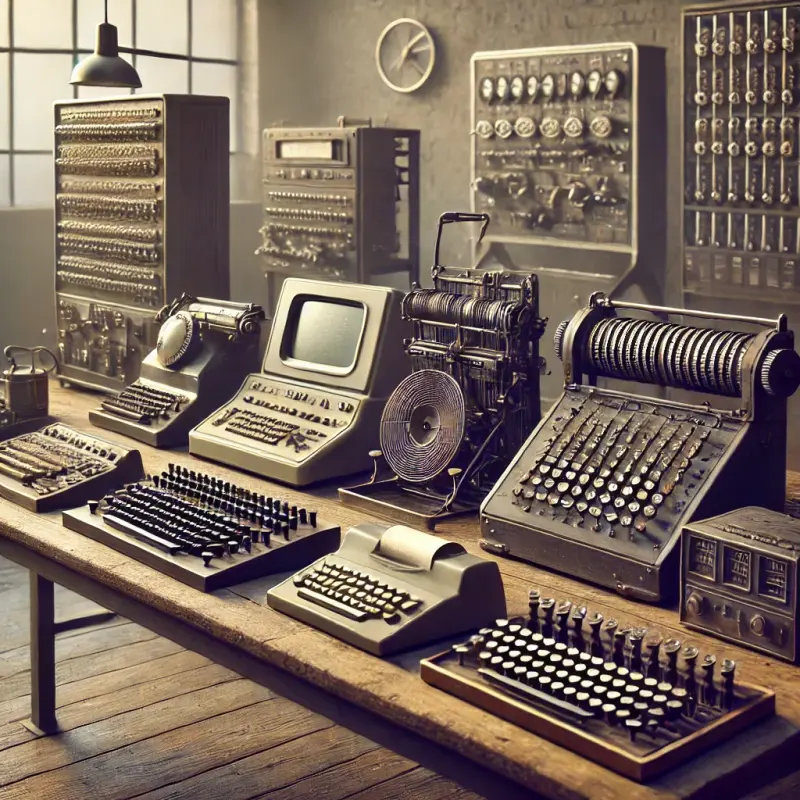The Evolution of Early Computing Machines: Precursors to Modern Computers
The journey from rudimentary calculating devices to the sophisticated computers of today is a testament to human ingenuity and the relentless pursuit of innovation. This article delves into the history of early computing machines, highlighting their development and their role as precursors to modern computers.

Ancient Calculating Devices
The need for computation has been evident since ancient times. Civilizations developed tools to assist with arithmetic operations, laying the groundwork for future advancements.
-
Abacus: Originating around 2700–2300 BCE in Mesopotamia, the abacus is one of the earliest known calculating tools. Consisting of a frame with rods and beads, it enabled users to perform basic arithmetic operations efficiently.
-
Antikythera Mechanism: Discovered in a shipwreck off the Greek island of Antikythera and dated to circa 100 BCE, this intricate device is considered the earliest known geared computing mechanism. It was designed to calculate astronomical positions, showcasing the advanced engineering of its time.
Mechanical Calculators of the 17th and 18th Centuries
The 17th century marked significant progress in mechanical computation, with inventors creating devices capable of performing more complex calculations.
-
Pascaline: In 1642, French mathematician Blaise Pascal developed the Pascaline, a mechanical calculator capable of addition and subtraction. It utilized a series of gears and wheels to represent numbers and perform calculations.
-
Stepped Reckoner: German polymath Gottfried Wilhelm Leibniz improved upon Pascal's design in 1673 with the Stepped Reckoner. This device could perform addition, subtraction, multiplication, and division, thanks to its innovative stepped drum mechanism.
The Analytical Engine: A Visionary Concept
In the 19th century, English mathematician Charles Babbage conceptualized the Analytical Engine, a design that embodies many principles of modern computers.
-
Design and Features: Babbage's Analytical Engine, conceived in 1837, was intended to be a general-purpose, fully program-controlled, automatic mechanical digital computer. It featured components analogous to modern computers:
-
The Mill: Functioning as the central processing unit (CPU), it was designed to perform arithmetic operations.
-
The Store: Serving as memory, it was intended to hold data and instructions.
-
The Reader and Printer: These components were designed for input and output operations, respectively.
-
-
Programming: Ada Lovelace, a mathematician and collaborator of Babbage, is often credited with writing the first computer program for the Analytical Engine. She recognized its potential beyond mere calculation, envisioning its application in areas like music and art.
Electromechanical Computers of the Early 20th Century
The early 20th century saw the development of electromechanical computers, which combined mechanical components with electrical systems to enhance computational capabilities.
-
Harvard Mark I: Completed in 1944, the Harvard Mark I was an electromechanical computer that utilized a combination of mechanical and electrical components to perform calculations. It was used extensively during World War II for ballistic calculations.
-
Zuse's Z3: In 1941, German engineer Konrad Zuse developed the Z3, considered the first programmable, fully automatic computing machine. Although it was electromechanical, its design incorporated elements of modern computing, such as programmability and binary arithmetic.
The Advent of Electronic Computers
The transition from electromechanical to electronic computers marked a significant leap in computational speed and efficiency.
-
ENIAC: Completed in 1945, the Electronic Numerical Integrator and Computer (ENIAC) was the first general-purpose electronic digital computer. It utilized vacuum tubes to perform calculations at unprecedented speeds, significantly advancing computational capabilities.
-
Colossus: Developed during World War II, Colossus was the world's first programmable digital electronic computer. It played a crucial role in code-breaking efforts, particularly in deciphering the Lorenz cipher used by German forces.
Legacy and Influence on Modern Computing
These early computing machines laid the foundation for the development of modern computers. Their innovations in programmability, data storage, and processing paved the way for the digital revolution.
-
Programmability: The concept of programmable machines, as seen in the Analytical Engine and later in electronic computers like ENIAC, is a cornerstone of modern computing.
-
Data Storage and Processing: Advancements in data storage and processing, initiated by early machines, have evolved into the complex memory and processing units found in today's computers.
In conclusion, the evolution of early computing machines reflects a continuous quest for more efficient and powerful tools to aid in computation. From ancient devices like the abacus to the sophisticated electronic computers of the mid-20th century, each innovation has contributed to the development of the versatile and powerful computers we rely on today.
Articles
Join our mailing list for notifications about the newest and most engaging articles sent straight to your email.